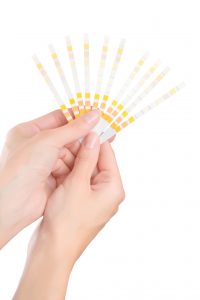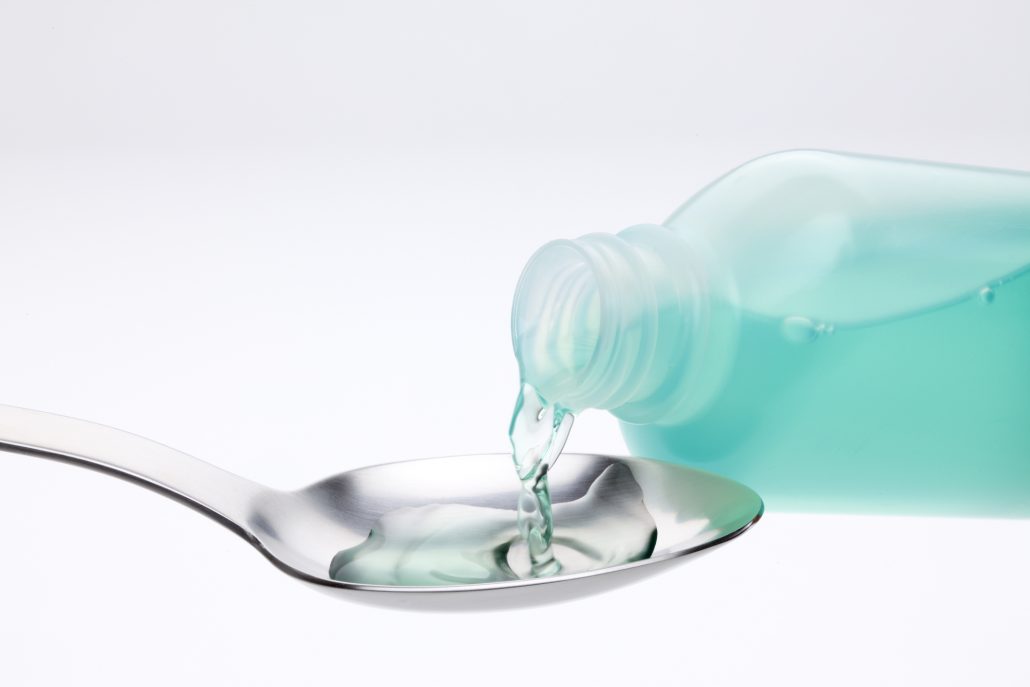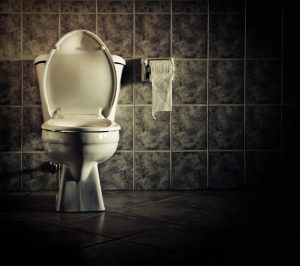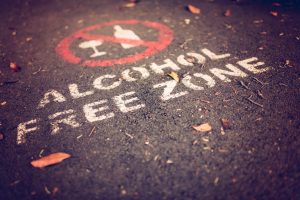by Sher Delva | May 22, 2017 | Addiction, Addiction Medicine, Addiction Stigma, Mental Health, Stigma, Therapy, Uncategorized

A needle exchange program in the Bronx, New York is stepping up to combat the ongoing opioid crisis and rising overdose death rates. Their latest tactic is handing out fentanyl test strips to heroin users.
The reasoning behind the test strips is to lower overdoses due to fentanyl-laced heroin.
Staff member Van Asher explains that the test strips will help addicts determine whether or not there is fentanyl is the drugs they’re using. The strips are usually used to drug test urine, but people can put a little of the mixture that’s in their syringe onto the strip to test whether or not what they are injecting contains fentanyl. This will help them make a more informed decision about what they are putting in their bodies, Asher explained to NPR.
Studies conducted by the Centers For Disease Control and Prevention revealed that most people do not know whether the heroin they’re using contains fentanyl. Asher told NPR that he started handing the strips out of desperation to curb the overdose rates among his clientele.
With each strip, Asher gives a survey to fill and report back. Unfortunately, Ashley admits getting clients to follow through is a difficult task.
Still, Asher is now working with programs around the country to try to replicate his idea. The idea originated at Inside in Vancouver Canada, North America’s only safe injection facility.
However, the major difference is that if someone is choosing to use their fentanyl-laced heroin at Inside, they can be medically monitored and an overdose is more likely to be reversed by staff, preventing death.
In the United States, safe injection facilities do not exist yet. While there are few areas testing the concept, none have yet to become established. Furthermore, harm reduction strategies remain a controversial topic. Therefore, it is up to the drug user to monitor how they use the drugs.
Some simply are not convinced.
Drug users like Vincente Estema explain that knowing there is fentanyl in his heroin is not going to stop him from using.
“It’s stronger! If it makes me feel the euphoria, I’m going to go for it,” he told NPR.
When an addict is at the point of wanting to use drugs, it is unlikely that the fentanyl test strips would deter them from using. However, it would at least inform them of the risk they are taking, and could potentially reduce the amount of the drug they take.
In 2015, the spike in fentanyl-laced overdose deaths led the Drug Enforcement Administration to issue a nationwide warning about the drug.
“Drug incidents and overdoses related to fentanyl are occurring at an alarming rate,” said DEA Administrator at the time, Michele Leonhart, calling it a “significant threat to public health and safety.”
During a three-month period in 2016, 74% of opioid overdoses in Massachusetts were caused by fentanyl! Fentanyl is up to 100 times stronger than morphine and is the strongest opioid available to doctors; even worse, different variations of fentanyl are hitting the streets like carfentanil and acryl fentanyl.
The numbers from Massachusetts indicate that heroin overdoses are dropping, but opioid-related overdose deaths continue to increase. Authorities agree that fentanyl is to blame. In a press release, Massachusetts Secretary of Health and Human Services Marylou Sudders called the data, “a sobering reminder of why the opioid crisis is so complex.”
Do you believe these strips could help combat the opioid epidemic? Would it affect how an addict uses? Regardless, any addict continues to use needs to seek help instead. The next time you use could be your last. Recovery is possible. We want to help you. Call now.
CALL NOW 1-888-922-5398
by Justin Mckibben | May 18, 2017 | Addiction Medicine, Detox, Heroin, Maintenance Drugs, Methadone, Opioids, Prescription Drugs, Withdrawal

Ever since Methadone was introduced to combat opioid dependence, it has been leaned on by countless people over several decades to treat opioid abuse. For a long time methadone clinics have been looked to as a source of relief from an addiction to opioids, but are they as effective as people seem to think? Over time more people who have used methadone to try overcoming serious addictions have realized methadone maintenance also comes with a great deal of damaging side effects.
What is a methadone clinic?
A methadone clinic is a clinic for the dispensing of methadone. Because this is a schedule II opioid analgesic drug, access must be restricted. Methadone clinics are a way to provide people with this medication. But before you rush out to find the one closest to you, there are a lot of things to consider.
What is a Methadone Clinic: History of Methadone
Firstly, let us not that methadone is an opioid drug. It is used to treat pain, like most opioid medications, but most people know it as a maintenance drug for detoxing from dependence on other opioids, such as heroin. Methadone, sold under many brand names, including:
- Methadose
- Dolophine
- Symoron
- Amidone
- Physeptone
- Diskets
Different countries have different brands as well. A few footnotes of the history of methadone include:
Methadone was developed in Germany by Gustav Ehrhart and Max Bockmühl.
The United States approved the use of Methadone.
About 41.400 kilograms of methadone were manufactured globally
What is a Methadone Clinic: Methadone Detox
Methadone is available in various forms, including:
- Pill
- Sublingual tablet
- Two different formulations designed for the patient to drink
Drinkable forms include:
- Methadose- the ready-to-dispense liquid form found in theUnited States.
- Diskets- tablets designed to work like Alka-Seltzer, dispersing rapidly in water for oral administration.
The most common method of administration is the liquid form, because it allows for small dose changes. Methadone is almost as effective when administered orally as by injection.
Detoxification using methadone is intended to be a way for people addicted to opioids such as heroin or powerful prescription drugs to taper off, but at the same time detoxification using methadone has been met with a great deal of controversy.
Many who oppose methadone clinics refer to this strategy as methadone substitution. As a treatment of opioid addiction methadone is heavily criticized for its role in what some call “social control of addicts.” Many who oppose methadone suggested that the drug does not function as much to curb addiction as to redirect it and maintain dependency. In other words, some insist methadone is essentially keeping people addicted, but making sure the money goes to drug manufactures and methadone clinics instead of street dealers.
What is a Methadone Clinic: Methadone Side-Effects
There are so many adverse effects of methadone, which may vary in range and severity depending on the individual. There include, but are not limited to:
- Sedation
- Diarrhea or constipation
- Perspiration
- Heat intolerance
- Dizziness
- Fainting
- Itching
- Weakness
- Chronic fatigue
- Sleep problems
- Nausea
- Hallucinations
- Memory Loss
- Weight gain
- Stomach pains
- Mood changes
- Restlessness
- Decreased libido or impotence
- Urinary difficulty
- Blurred vision
- Skin rash
- Low blood pressure
- Headaches
- Seizures
- Heart problems
- Respiratory problems
Some of these adverse effects of methadone use are much more serious than others.
What is a Methadone Clinic: Withdrawal Symptoms
There is also a massive list of possible withdrawal symptoms from using methadone. This is one of the primary issues many people have with methadone treatment.
Physical withdrawals include:
- Runny nose and sneezing
- Nausea
- Vomiting
- Diarrhea
- Fever
- Sweating
- Chills
- Aches and pains (especially in joints)
- Sensitivity to pain
- Hyperventilation
- Tremors
- High blood pressure that may cause strokes
Others are more concerned with the mental aspect of the withdrawals experienced from methadone.
Cognitive withdrawals include:
- Suicidal ideation
- Drug cravings
- Depression
- Insomnia
- Delirium
- Hallucinations (auditory and visual)
- Agitation
- Anxiety
- Panic disorder
- Paranoia
- Delusions
- Apathy
The irony is that methadone withdrawal symptoms are even reported to last significantly longer than withdrawals from some other opioids. In some cases, people may even try to treat an opioid addiction with this drug not knowing that it is actually a much worse opioid to withdrawal from.
What is a Methadone Clinic: Methadone Overdose
As mentioned before, there are some very real dangers when it comes to using methadone.
- Between 1999 and 2004, deaths in the U.S. linked to methadone quadrupled.
- In 2004 reports credit methadone as contributing to 3,849 deaths, 82% of which were reported as accidental.
- In 2011, there were 4,418 deaths in the United States involving methadone. At the time that made up 26% of total deaths fromopioid poisoning.
Respiratory depression is probably the most common overdose risk related to opioid drugs. Other symptoms of a methadone overdose include:
- Hypoventilation (slow/shallow breathing)
- Drowsiness
- Cool, clammy skin
- Limp muscles
- Unconsciousness
- Coma
- Excessive vomiting
- Risks are greater with higher doses, as well as mixing methadone with any other drugs.
The risks of methadone are very, very real. In fact, U.S. Food and Drug Administration (FDA) issued a Public Health Advisory back in 2006 about methadone titled “Methadone Use for Pain Control May Result in Death and Life-Threatening Changes in Breathing and Heart Beat”. In the report, the FDA stated that they received reports of death and life-threatening side effects with patients who were newly starting methadone.
Both individuals who were starting methadone for pain, or who were trying to switch to it from another powerful narcotic pain reliever were included to be at an elevated risk, according to the FDA.
What is a Methadone Clinic: Another Way
Getting off of powerful opioid drugs, whether they are prescription narcotics or illicit street drugs, is possible without the use of methadone. While maintenance drugs can be useful to some extent as a means of harm reduction, these should not be considered as sustainable means of addiction recovery. Maintenance drugs are typically only ever effective if utilized in combination with therapy and other forms of addiction treatment.
Luckily there are other ways to get help. It is possible to be safely and effectively removed from a methadone taper through a safe medical detox. Understanding methadone can also be fatal is of vital significance. Methadone detox can be deadly if not supported by a medical staff with the right medications to help ease the pain and discomfort of the detox. Medical detox combined with a holistic treatment program is a proven strategy for saving lives.
If you or someone you love is struggling, do not wait. Please call toll-free now. We want to help. You are not alone.
CALL NOW 1-888-922-5398
by Sher Delva | May 11, 2017 | Addiction, Addiction Medicine, Addiction Stigma, Drug Abuse, Heroin, Mental Health, Stigma, Therapy
 Public bathrooms are ground zero in the opioid epidemic, according to a recent report. Addicts like Eddie* know all about this. In an interview with NPR, Eddie declares every single bathroom in Cambridge, Massachusetts that he among many others uses to get high.
Public bathrooms are ground zero in the opioid epidemic, according to a recent report. Addicts like Eddie* know all about this. In an interview with NPR, Eddie declares every single bathroom in Cambridge, Massachusetts that he among many others uses to get high.
“I know all the bathrooms that I can and can’t get high in,” says Eddie, 39, in the interview.
“With these bathrooms here, you don’t need a key. If it’s vacant, you go in. And then the staff just leaves you alone,” Eddie says. “I know so many people who get high here.”
Even at fast food places, Eddie has his technique for gaining access.
“You don’t need a key, but they have a security guard that sits at the little table by the door, directly in front of the bathroom,” Eddie says.
“Some guards require a receipt for admission to the bathroom,” he says, “but you can always grab one from the trash.”
*Name Changed
Managing Public Bathrooms is ‘Tricky.’
Businesses in the area struggle to come up with solutions to the problem. Some have installed low lighting, blue in particular, to make it difficult for users to find a vein.
The city of Cambridge plans to install “Portland Loos” in the heart of Central Square by the end of the summer. The “Portland Loo” public bathrooms originated in the city of Portland, Organ. These toilets reduce privacy and ensure police can see in if they suspect illegal activity.
Furthermore, the Loos have:
- No running water inside: Prevents people from using the water to clean themselves.
- No mirror: People tend to smash mirrors.
- Bars at the top and bottom of the structure: This reduces privacy. Cops can peep in near the ground to make sure there’s no more than one set of feet inside. Furthermore, you hear sounds inside and outside of the bathrooms. Nobody wants to stick around these toilets for long.
- A graffiti-proof coating: No one will be tagging these bathrooms.
- Walls and doors made from heavy-gauge stainless steel
Business owners hope that these bathrooms will relieve pressure on their bathrooms. However, others worry they will become a haven for drug use.
The bathrooms at 1369 Coffee House in Central Square are open for customers who request the code from staff at the counter. Owner Joshua Gerber required this step to make the bathrooms safer. He also installed metal boxes in the mall next to his toilet for needles and other things that clog pipes.
“We’d find needles or people’s drugs,” Gerber says to NPR. “It’s a tricky thing, managing a public restroom in a big, busy square like Central Square where there’s a lot of drug use.”
In recent years, Geber and his staff have found several people lying on the bathroom floor unconscious.
“It’s very scary,” Gerber says. “In an ideal world, users would have safe places to go that it didn’t become the job of a business to manage that and to look after them and make sure that they were OK.”
Safe Needle Exchange Programs?
In the past, we have mentioned areas in Canada and some European Countries that offer safe areas to do drugs. The United States is slowly coming around to providing these facilities as well. Though controversial, these safe needle injection sites offer a place for addicts to use drugs and reduce overdose fatalities. They also reduce crime and will hopefully reduce drugs done in public restrooms.
The city of Las Vegas plans to decrease the risk of sharing contaminated needles by installing vending machines throughout the city. These vending machines would provide clean needles to addicts reducing infectious diseases. They would also offer disposal containers to dispose of needles safely. This would prevent needles from being disposed of improperly.
Officials in several states in America have proposed the implementation of supervised injection facilities, including:
- New York
- California
- Washington D.C.
Supervised injection facilities (SIFs) are legally sanctioned locations where people who use intravenous drugs can inject pre-obtained drugs under medical supervision. There are pros and cons to these facilities, however, they are likely to reduce drug sue on the streets and reduce infections from needle sharing. Furthermore, they reduce overdose fatalities.
Limits on Discussion and Direction
Overall, discussions on safety practices for bathrooms remain sparse. There is a reason why:
“It’s against federal and state law to provide a space where people can use knowingly, so that is a big deterrent from people talking about this problem,” says Dr. Alex Walley, director of the addiction medicine fellowship at Boston Medical Center.
Still, without guidance, many libraries, town halls, and businesses are shutting their bathrooms down to the public. Closing down public restrooms leads to more drug use, injuries and discarded needles on the streets and in parks with children playing.
There are a variety of methods that could make bathrooms safer for the public and drug users.
- A model restroom would be clean and well-lit and have very few cracks and crevices for hiding drug paraphernalia.
- Bathrooms should also contain a biohazard box for needles and bloodied swabs.
- These bathrooms would also need naloxone and perhaps sterile water.
- The door with open out so a collapsed body would not block entry.
- It would need to be easy for EMTS and authorizes to unlock from the outside in the case of an emergency.
Very few bathrooms meet these standards in the United States. Sadly, as the opioid epidemic continues to take lives each and every day, these issues must be addressed. How can cities improve the safety of their public bathrooms?
Doctors, nurses and public health workers who help addiction patients every day argue the solution will have to include safe injection sites.
If communities like Boston start to reach a breaking point with bathrooms, “having dedicated facilities like safer drug consumption spaces is the best bet for a long-term structural solution that I think a lot of business owners could buy into, “ says Daniel Raymond. Raymond is deputy director of policy and planning at the New York-based Harm Reduction Coalition.
No business groups in Massachusetts have come out for such spaces yet. Time will tell what changes occur. Getting the right kind of treatment for drug addiction is paramount to progress. If you or someone you love is struggling, don’t wait. Please call toll-free now.
CALL NOW 1-888-922-5398
by Sher Delva | May 4, 2017 | Addiction, Addiction Medicine, Addiction Stigma, Addiction Treatment, Stigma

These days, it is harder to name celebrities who aren’t sober than those who are. After all, we hear reports daily on newly sober celebs. Whether it’s Daniel Radcliffe or Bam Margera, the list of celebrities who are sober continues to expand.
Now, leading man Brad Pitt revealed in an interview with GQ magazine that he has quit drinking and is living sober. Brad Pitt says he is six months sober and is looking forward to continuing his sobriety for the long-haul.
According to Pitt, his divorce from actress and producer Angelina Jolie was due partly to his out-of-control drinking behavior. Pitt admits that the past six months of his life has been a “weird” time, according to the interview, and he looks forward to regaining his life back.
“Personally, I can’t remember a day since I got out of college when I wasn’t boozing or had a spliff, or something. Something. And you realize that a lot of it is, um—cigarettes, you know, pacifiers. And I’m running from feelings. I’m really, really happy to be done with all of that,” he says.
During Pitt’s divorce from Angelina Jolie, his drinking and drug use got the full media scrutiny. Jolie said her reason for the divorce was “for the health of the family” which may have alluded to Pitt’s struggles with substance use. Now, with this recent interview, it is apparent substance use played a major role.
“I was boozing too much. It’s just become a problem,” he admits. “And I’m really happy it’s been half a year now, which is bittersweet, but I’ve got my feelings in my fingertips again. I think that’s part of the human challenge: You either deny them all of your life or you answer them and evolve.”
From the interview, Brad Pitt confirms a commonality about addiction: it doesn’t happen overnight. In most cases, people drink and use for years, and the destruction continues to build months, years and decades down the road. Substance use creates problems for more than just the addict. It can destroy families, friendships, and careers too.
Celebrities like Brad Pitt, Ben Affleck, Bam Margera, Stephen Moyer and Alex Baldwin have all gone public with their recovery. With each admission, the stigma of addiction decreases. Many have a perception of what it looks like to be an addict. However, addiction does not discriminate. It can affect anyone.
When it comes to celebrities, often having too much power and success can lead to their downfall.
Pitt himself has said, “Success is a beast. And it actually puts the emphasis on the wrong thing. You get away with more instead of looking within.”
Furthermore, Brad Pitt says he is now looking within and learning more about himself. He sees a therapist regularly and is refocusing his family.
“For me this period has really been about looking at my weaknesses and failures and owning my side of the street,” Pitt said. “For me every misstep has been a step toward epiphany, understanding, some kind of joy. Yeah, the avoidance of pain is a real mistake. It’s the real missing out on life. It’s those very things that shape us, those very things that offer growth, that make the world a better place, oddly enough, ironically. That make us better.”
These days, Pitt says he enjoys his cranberry and fizzy water drinks. He admits that it is challenging to give up wine completely, but he “does not want to live that way anymore.”
“I mean, we have a winery. I enjoy wine very, very much, but I just ran it to the ground. I had to step away for a minute,” He says.
More and more celebrities are choosing sobriety. If they can do it so can you. Do not feel ashamed of where your addiction has led you. Instead, choose to live a life of sobriety. We can help you get back on track. Call now.
CALL NOW 1-888-922-5398
by staff | May 3, 2017 | Addiction, Addiction Medicine, Addiction Stigma, Addiction Treatment, Detox, Maintenance Drugs, Methadone, Suboxone, Therapy, Vivitrol, Withdrawal

(This content is being used for illustrative purposes only; any person depicted in the content is a model)
When it comes to overcoming a serious drug addiction it is essential to start strong on the road to recovery with a healthy and stable foundation. With most substances detoxing is not particularly fatal, but there are some drugs that can cause life-threaten detox symptoms without consistent medical care. So when people ask- can I detox from drugs at home- it is technically possible to go “cold turkey”, but chances are it’s going to be extremely painful and in some cases is far too dangerous to risk.
Detoxing from drugs in a safe medical environment is worth the effort for multiple reasons, regardless if you could technically survive the detox on your own, and especially when withdrawals could become lethal.
Sustainable and fulfilling sobriety means consistent work on both the physical and the mental and emotion aspects of addiction. Drugs and alcohol are not the only symptom to addiction; and overcoming withdrawal is not the only benefit of safe medical detox.
You may still be struggling to accept that it isn’t a matter of pure willpower. Maybe you are a parent or family member who just wants to help your loved one. Either way some people resist reaching out for help. Still, the truth is that trying to detox at home isn’t just an unnecessary risk, it can also be incredibly dangerous or even fatal.
Can I Detox From Drugs at Home: Withdrawals
The fear of the pain and discomfort of withdrawal symptoms is often the primary reason why most people never get a fair shot at getting off of drugs. A lot of people end up trying to figure out how to detox from drugs at home, but many find themselves being unsuccessful because of the difficulties they face and the lack of support. Some of the more general withdrawal symptoms people experience when coming off of drugs includes:
- Anxiety
- Irritability
- Panic attacks
- Difficulty concentrating
- Short-term memory loss
- Disturbed sleep
- Headache
- Heart palpitations
- Tremors
- Sweating
- Nausea
- Muscle pain
- Hypertension
- Irregular heart rate
Of course, some drugs are more powerful and thus more damaging. If someone tries to detox at home “cold turkey” from certain substances they may accidentally cause serious damage to their body and/or vital organs.
When asking- can I detox from drugs at home- we also have to consider any pre-existing conditions, or conditions that may have been created through long-term drug use. There are also medical complications during the detox process that most cannot diagnose or treat at home.
Some drug withdrawals can actually kill. Alcohol withdrawals are extremely dangerous, and abruptly stopping some drugs without medical monitoring and assistance is especially hazardous. Ultimately, the specific substance, the length of use and the severity/frequency of use will determine how difficult the detox process will be.
Can I Detox From Drugs at Home: Maintenance Drugs
Again, the difficulty of the detox process can be physically overwhelming. One way people try to fight the withdrawal symptoms from home is by using maintenance drugs, such as:
If you would like more information on Suboxone, download our free E-book: 5 Things No One Tells You about Suboxone.
DOWNLOAD FREE E-BOOK
While these can be useful elements of treatment, often times these methods are unsustainable in the long-term. Some maintenance drugs like Suboxone have side-effects and withdrawal symptoms of their own, which pretty much defeats the purpose.
With methadone people visit clinics to receive doses of a maintenance drug that also is well known for its own horrible withdrawal symptoms.
In the end, those who practice in the field of addiction treatment the medical community agree that these drugs are only ever useful when accompanied by cognitive behavioral therapy or comprehensive addiction treatment. They should not be used as an extended solution to a more complex issue.
Can I Detox From Drugs at Home: Behavioral Therapy
If you’re asking, “can I detox from drugs at home?” then you are probably forgetting one of the most important parts of addiction treatment. Beyond getting through the physical side of detox, there is so much more to recovering from drugs.
While most people think of detox as just the first stages of trying to get clean, there are still opportunities to lay the ground work for continued growth and personal development. Having the time away from the influences of the outside world, you can focus on beginning to change addictive behaviors in a secure facility.
Behavioral therapy and other holistic treatment methods are crucial ways of starting off on a path to recovery from drugs and alcohol. Creating new coping skills and confronting underlying issues can be the key to moving forward progressively while also preventing relapse.
Can I Detox From Drugs at Home: Safe Medical Detox
Addiction treatment professionals agree that detoxing from drugs should always be done with the supervision and support of a trained and experienced medical staff.
People do attempt detoxing from home, but it is still an unnecessary level of discomfort and risk. People do also die from trying to detox from dangerous drugs at home without the proper support. It is important to stress why even though it may be ‘possible’ to try detoxing from drugs at home, it can also be deadly. There are more than enough resources out there, and people willing to help.
At Palm Healthcare we believe in providing drug and alcohol detox with 24-hour assistance from an experienced medical staff to continuously evaluate individual progress, administer the appropriate levels of medications and provide unlimited support during this process. Our highly qualified specialists genuinely strive to make recovery possible for everyone who needs help. If your or someone you love is struggling with substance abuse or addiction, please call toll-free.
CALL NOW 1-888-922-5398


 Public bathrooms are ground zero in the opioid epidemic, according to
Public bathrooms are ground zero in the opioid epidemic, according to 


